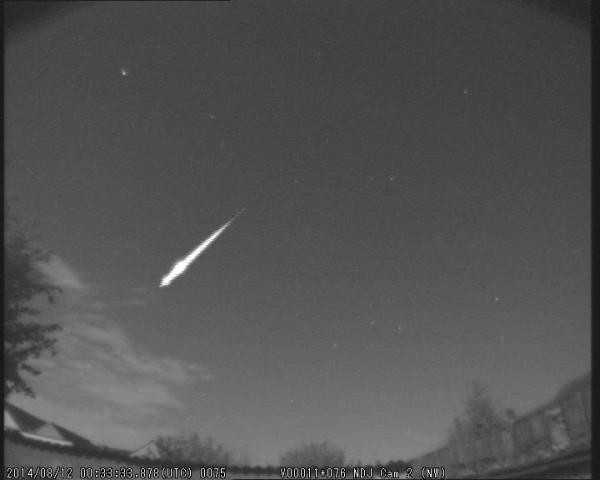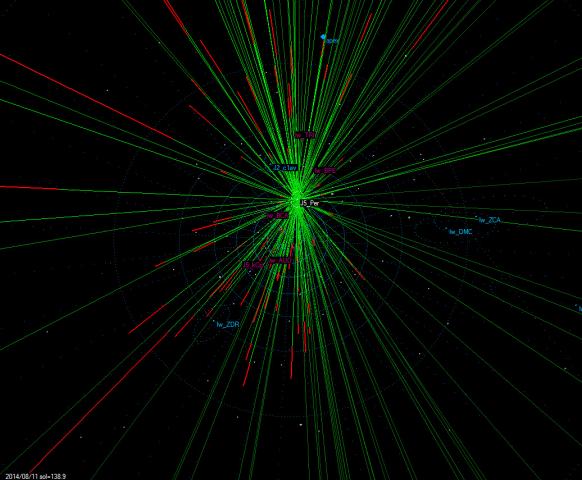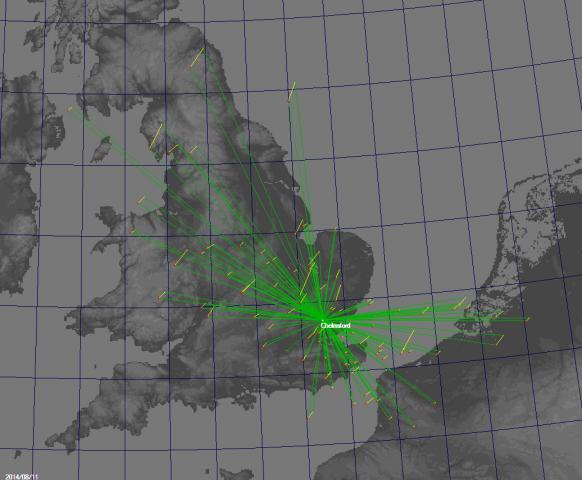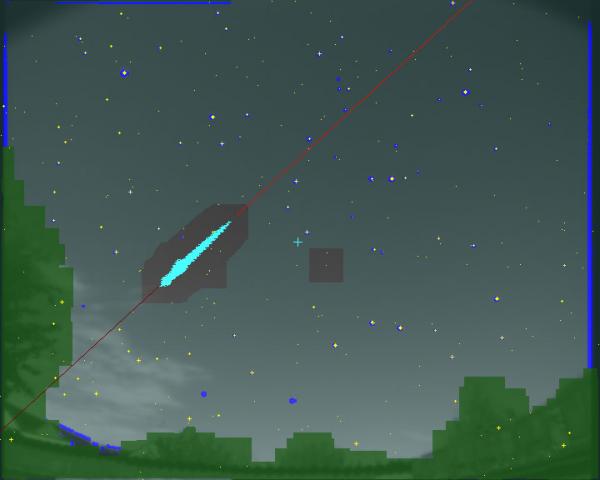- This topic has 6 replies, 4 voices, and was last updated 11 years, 4 months ago by
 William Stewart.
William Stewart.
-
AuthorPosts
-
10 August 2014 at 10:51 am #573369
 Nick JamesParticipant
Nick JamesParticipantAs a bit of an experiment we are providing a live feed from my meteor detection TV cameras during the Perseid shower period. You can find it here.
The feed will show each detection made by the system and, particularly before midnight, a lot of these can be aircraft so there will be a lot of false alarms. Also, if the weather is poor, as it has been the last two nights, there are a lot of false triggers from moving clouds. Our web manager, Dominc Ford, has put together a voting system on the pages so that you can indicate whether you think the image contains a meteor or not. Humans are much better at doing this than computers!
Hopefully the weather will improve through to the maximum on Wednesday morning. The most exciting detection last night was the Essex Police helicopter, probably searching for a stray dog. I’m assuming that will be given a thumbs down in the voting but I’ll be interested to see how this all works!
Nick.
10 August 2014 at 12:47 pm #576639 Gary PoynerParticipant
Gary PoynerParticipantJust gave my votes Nick. Good idea! Must find time to go through your archive and vote too.
Stray dog or mad dog? 😉
Gary
10 August 2014 at 11:24 pm #576640 Nick JamesParticipant
Nick JamesParticipantIt could have been the lion that was spotted a few years ago but which was never traced. The police deployed many resources including the helicopter to find that.
Anyway, much clearer tonight so some real meteors showing up in the images.
12 August 2014 at 7:15 am #576641 Nick JamesParticipant
Nick JamesParticipantQuite a few nice Perseids last night. Despite some drifting cloud and a bright Moon I caught 86 Perseids out of a total of 123 meteors on the two cameras. The attached pic shows a nice mag -2.8 Perseid at 00:33:33. You can browse through the other confirmed meteors here.
The current forecast for here tonight looks reasonable too so keep an eye on the live page.


 17 August 2014 at 1:05 am #576664
17 August 2014 at 1:05 am #576664James Lancashire
ParticipantHi Nick, feel free to link to a webpage, but what is the overview of your system, and the details for getting meteor mags to 0.1? I also note you’re not getting fainter than about mag 2 for showers or sporadics. Is this because of the system or sky conditions during the session? (Yes I know the Moon was around over Perseid maximum). Just interested in any limitations. Thanks
19 August 2014 at 7:30 am #576667 Nick JamesParticipant
Nick JamesParticipantHi James,
The reason for the magnitude limit is that this is roughly the detection limit of my TV system (Watec 902H2 Ultimate + 3.8mm, f/0.8 lens) in individual video frames. Deeper limits are possible with TV systems using longer focal lengths but you then get smaller fields of view.
The frames are analysed using a program called UFO Analyser. This matches stars in the image with a catalogue (see the image below) and then uses this to estimate the magnitude of the meteor throughout its path. The magnitude quoted is the maximum magnitude but the advantage of a TV system is that you can get a magnitude profile sampled 25 times a second.
Nick.
 19 August 2014 at 2:17 pm #576668
19 August 2014 at 2:17 pm #576668 William StewartParticipant
William StewartParticipantHi James,
Using a Watec 902H (the earlier, lower sensitivity model of Nick’s camera) in conjunction with a 8mm f0.8 lens it’s possible to obtain a stellar limiting magnitude of better than +5.5 on a clear, moonless night at 25 frames per second. Meteor detection is determined by a number of factors not least of which is the apparant brightness of the meteor. In addition however, the UFO Capture software has a number of configurable “trigger” settings which determine the circumstances under which a recording will be made.
These trigger values can be set to a high sensitivity whereby the slightlest movement within the FOV will trigger a recording. This is great for fainter meteors but the downside is that it also results in many false captures (due to birds, bats, insects, falling leaves, aircraft, satellites etc, etc). Lowering trigger sensitivity reduces the the number of false captures but also reduces the number of faint meteors recorded.
My system has what I regard to be quite sensitive trigger values and records meteors down to 3rd magnitude.
Further details of our systems and links to our papers (which go into even more detail) are available on the NEMETODE website.
Best regards
William
-
AuthorPosts
- You must be logged in to reply to this topic.
